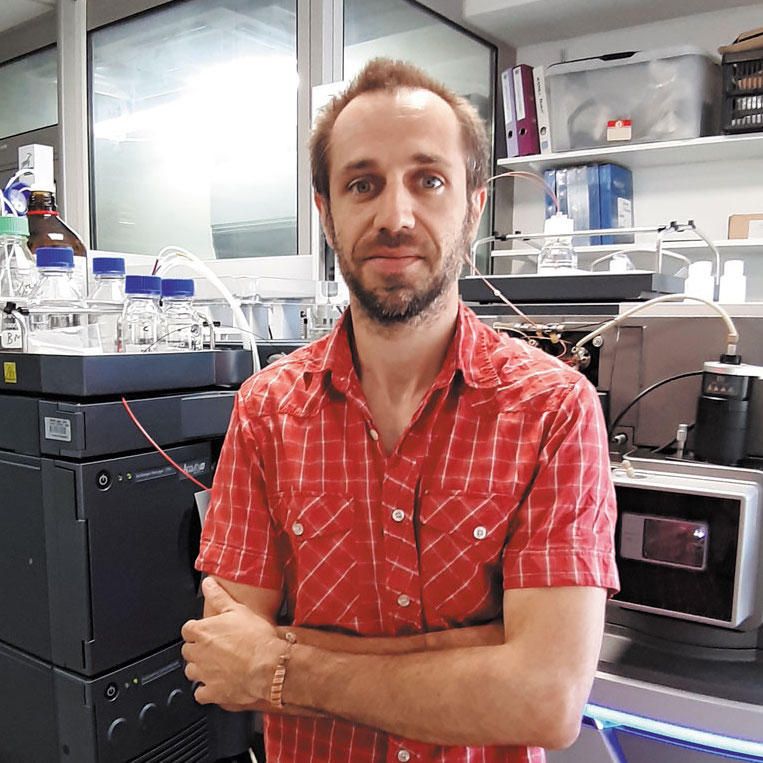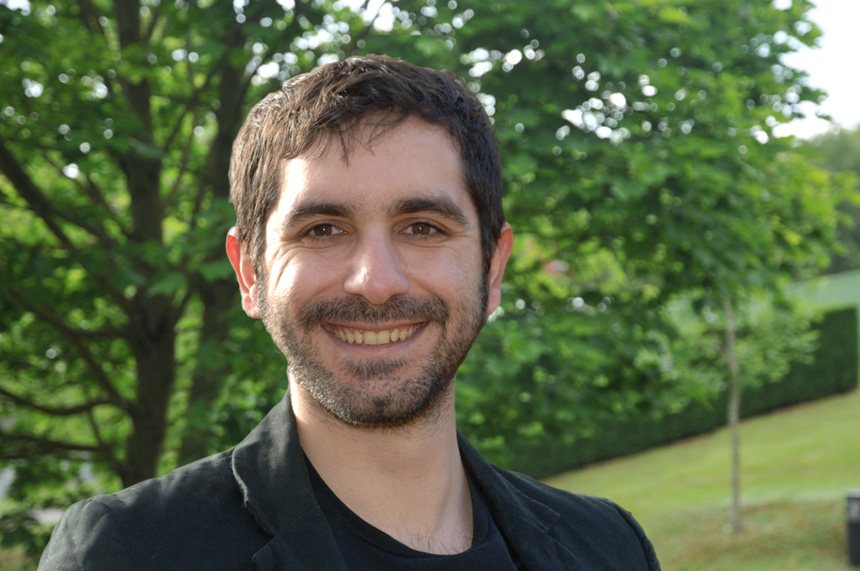IPBS researchers coordinate or are partners in 10 projects funded by the French National Research Agency


Of the four fundamental macromolecular components necessary for life, complex carbohydrates, or glycans, are probably the most structurally diverse. Glycans cover each cell in the human body, decorate almost all secreted proteins and have been shown to play roles in nearly every biological and pathological processes. The GLYCOMIG project, coordinated by Dr. Yoann Rombouts, focuses on a sugar polymer expressed by immune cells and aims to study how it regulates the migration of these cells, a process essential to the establishment of the immune response. This project will generate new knowledge in the fields of immunology and could lead to the development of new therapeutics for inflammatory and infectious diseases such as tuberculosis.

The aim of the TagInhA project, coordinated by Dr. Lionel Mourey, is to use advanced methods in organic chemistry involving the pre-organization of small molecules inside the active site of a protein, combined with X-ray crystallography, to discover and characterize new inhibitors of a specific therapeutic target. The selected target is the InhA enzyme involved in the biosynthesis of mycolic acids, cell envelope components essential for the survival of mycobacteria. The major goal of the project is to discover new molecules active against two mycobacterial pathogens: Mycobacterium tuberculosis, the causative agent of tuberculosis, and Mycobacterium abscessus, which is responsible for severe lung infections in patients with lung disorders such as cystic fibrosis.

The goal of the JoulMECT project, coordinated by Dr. Jelena Kolosnjaj-Tabi is to develop an approach combining the use of electrical pulses and conductive and semi-conductive inorganic nanoparticles to improve the treatment of deep-seated tumors. In such a combination, the nanoparticles will: heat up locally due to the Joule effect (which will attenuate desmoplasia as this mild thermal effect destructures collagen fibers, adjacent to the nanoparticles), oscillate due to the alignment of the nanoparticle charges with the electric field and/or migrate as a result of electrophoretic drag (improving drug diffusion) and, thanks to the “tip effect” the nanoparticles will locally amplify the external electric field (improving electroporation of deep tumors). Once mastered, this approach could represent a major breakthrough in the treatment of deep desmoplastic tumors, which often cannot be operated on, such as pancreatic cancer or certain hepatocarcinomas.

Infections caused by mycobacteria such as Mycobacterium tuberculosis, the causative agent of tuberculosis, and Mycobacterium abscessus, responsible for pulmonary infections, are on the rise and becoming increasingly resistant to treatment. The aim of the DIPTOP project, coordinated by Prof. Laurent Maveyraud, is to develop new compounds capable of inhibiting bacterial growth by targeting a specific phosphopantheteinyl transferase. This enzyme is responsible for activating several synthetases that catalyse the synthesis of various molecules, essential to bacteria. In collaboration with the SCPMIB, we will combine information obtained from X-ray crystallography, biophysical analysis, medicinal chemistry, enzymatic assays and bacterial growth experiments to propose new compounds as potential antimycobacterial molecules.

Tuberculosis treatments are long, and patients’ adherence is hampered by frequent side effects, entailing premature treatment arrest and exposing to disease relapse. To date, the only prognostic marker for end-of-treatment outcome remains the culture conversion status after two months of antituberculous treatment, though the sensitivity for prediction of treatment success is poor. The difficulties in diagnosing and monitoring tuberculosis in patients translates in big delays to detect unsuccessful treatment and therefore to modify it when necessary. The TB-in-time project, coordinated by Dr. Jérôme Nigou, aims at developing an integrated approach, based on the analysis patients’ exhaled air, to assess in a rapid and non-invasive manner the efficacy of antituberculous treatment in real-time.

The TARGET-QS project, involving Dr. Hedia Marrakchi from the IPBS, aims at developing new inhibitors against resistant bacterial biofilms. The project focuses on mixed biofilms, composed of pathogens causing persistent and often fatal infections in cystic fibrosis patients. The strategy is to target Quorum Sensing (QS), a cellular communication system between bacteria, as a novel molecular target. QS inhibition prevents biofilm formation and keeps bacteria susceptible to antibiotics, without directly targeting their survival. Towards this purpose, partners have developed a series of QS inhibitors capable of preventing the formation of biofilms and restore antibiotic activity, without cytotoxic effect on lung cells. Starting from a promising series of QS inhibitors, the objective of TARGET-QS is to develop and select QS inhibitors as multi-species anti-biofilm agents. The approach is based on drug-design by QSAR techniques, the elucidation of hits’ mechanism of action and the evaluation of their action in real time, in a microfluidic system. In fine, this will validate QS as a therapeutic target in order to propose innovative treatments for resistant cystic fibrosis-related infections, and in a larger perspective, to participate in the fight against resistant infections that involve bacterial biofilms.

The objective of the RHOBMAPK project, which involves partners at the IPBS, including Dr. Jean-Denis Pedelacq, the Centre de Recherche en Cancérologie de Toulouse (CRCT) and the Toulouse Biotechnology Institute (TBI), is to gain a comprehensive understanding of the role of the GTPase RHOB in the resistance to Epidermal Growth Factor Receptor (EGFR) therapies. Preliminary findings by the partners indicate that RHOB negatively regulates the activity of the MAPK pathway by reducing ERK activity and cell viability. The project’s aims include investigating the supramolecular organization and localization of RHOB/ERK complexes, as well as designing mutants capable of disrupting these interactions to gain insights into their cellular function. Furthermore, this project intends to examine the impact of RHOB expression on cell signaling and its influence on the cellular response to EGFR inhibitors. The project may lead to novel therapeutic strategies against cancer.

Mutations in the gene encoding the CFTR protein affect mucus-producing epithelia. In the lungs, viscous mucus obstructs the bronchi, creating an environment conducive to chronic bacterial infection and the death of patients with Cystic Fibrosis. Since lung failure is responsible for mortality, gene therapy must be aerosolized to deliver the transgene. However, the high viscosity of CF mucus traps both viral and non-viral vectors and limits their clinical impact. In this context, extracellular vesicles (EVs) exhibiting a natural ability to diffuse into dense extracellular matrices, are relevant candidates to diffuse into mucus. The interest of ES derived from mesenchymal stem cells (MSCs) has been established in several pulmonary pathologies, due to their natural antibacterial, anti-inflammatory and anti-fibrotic effects. Few studies have reported delivery of MSC-EV to the lungs after nebulization, demonstrating their safety but also showing heterogeneous results likely due to lack of stability during nebulization. The EVADE project, involving Dr. Marie-Pierre Rols from the IPBS, aims to nebulize the hMSC-EVs optimized to deliver an mRNA encoding CFTR and to evaluate them in the specific CF context.

Gram-negative bacteria are a major health problem as they resist antibiotics, causing millions of deaths annually. The beta-barrel protein assembly machinery (BAM) helps assemble outer membrane proteins and is a potential target for new antimicrobials. Researchers involved in the PermeaStress project, including Dr. Julien Marcoux from the IPBS, discovered that the lipoprotein DolP interacts with BAM in Escherichia coli, maintaining membrane stability. Inactivating DolP makes the bacteria sensitive to antibiotics and mimics BamA depletion. Partners will use a multiscale experimental approach to study DolP’s molecular processes at the cellular, outer membrane, and structural levels.

Climate change is causing an increase in toxic algae and the invasion of new species along European coasts. These algae produce dangerous toxins that pose a serious threat to human health, causing inflammatory effects like severe dermatitis and asthma attacks. Recent discoveries have found that certain marine toxins induce cell death through pyroptosis, an inflammatory cell death mechanism. The INFLAMATOX project, involving Dr. Etienne Meunier from the IPBS, aims to study the adaptations of marine invertebrates to these toxins and identify targets for developing new anti-inflammatory and anti-toxin drugs for human therapy.

